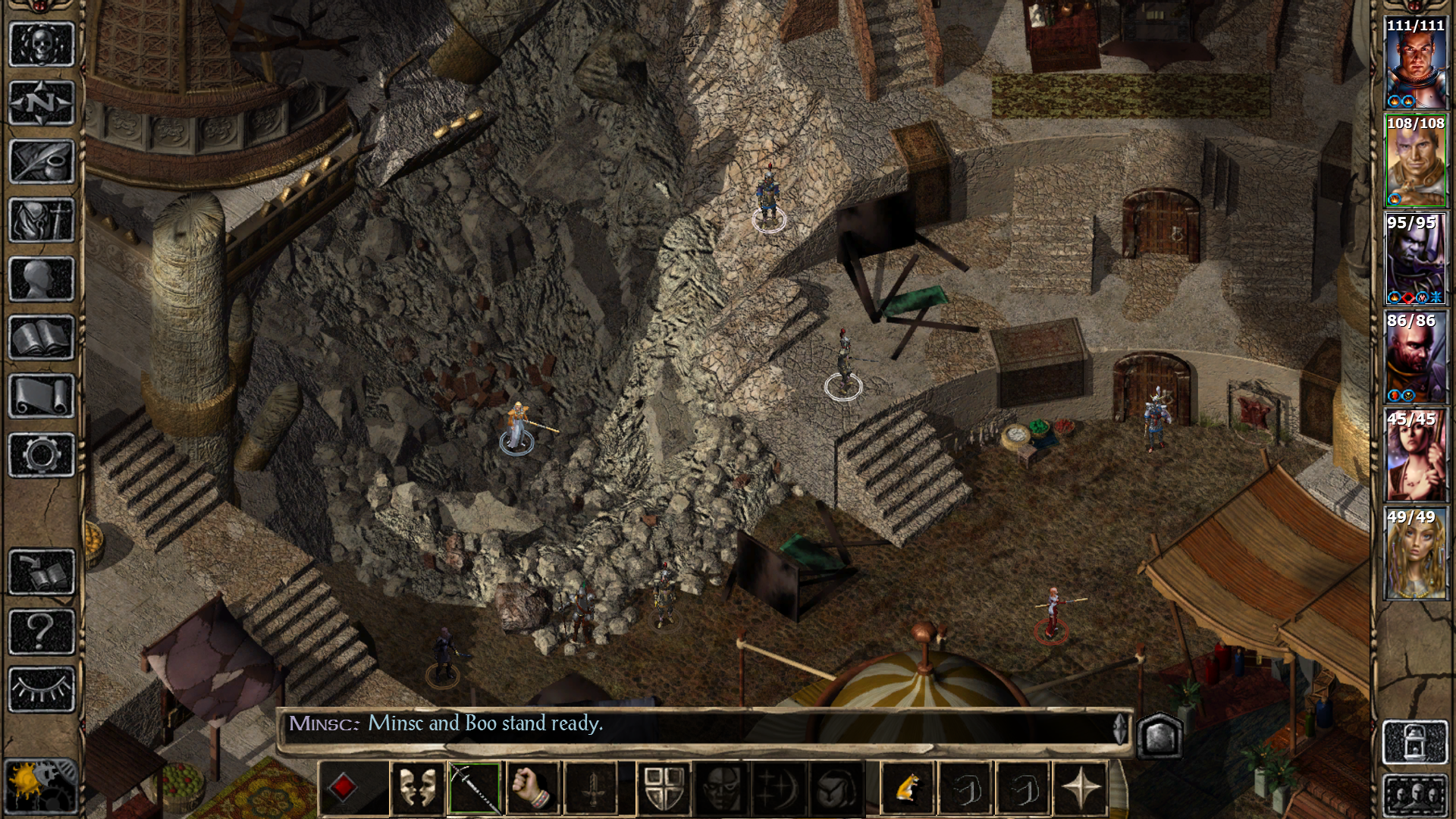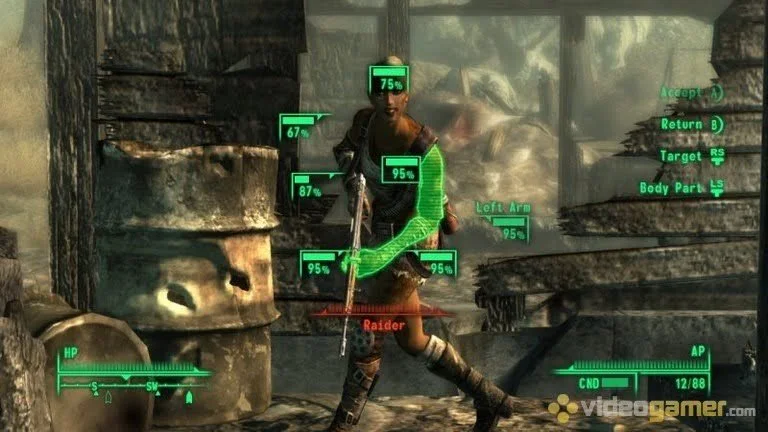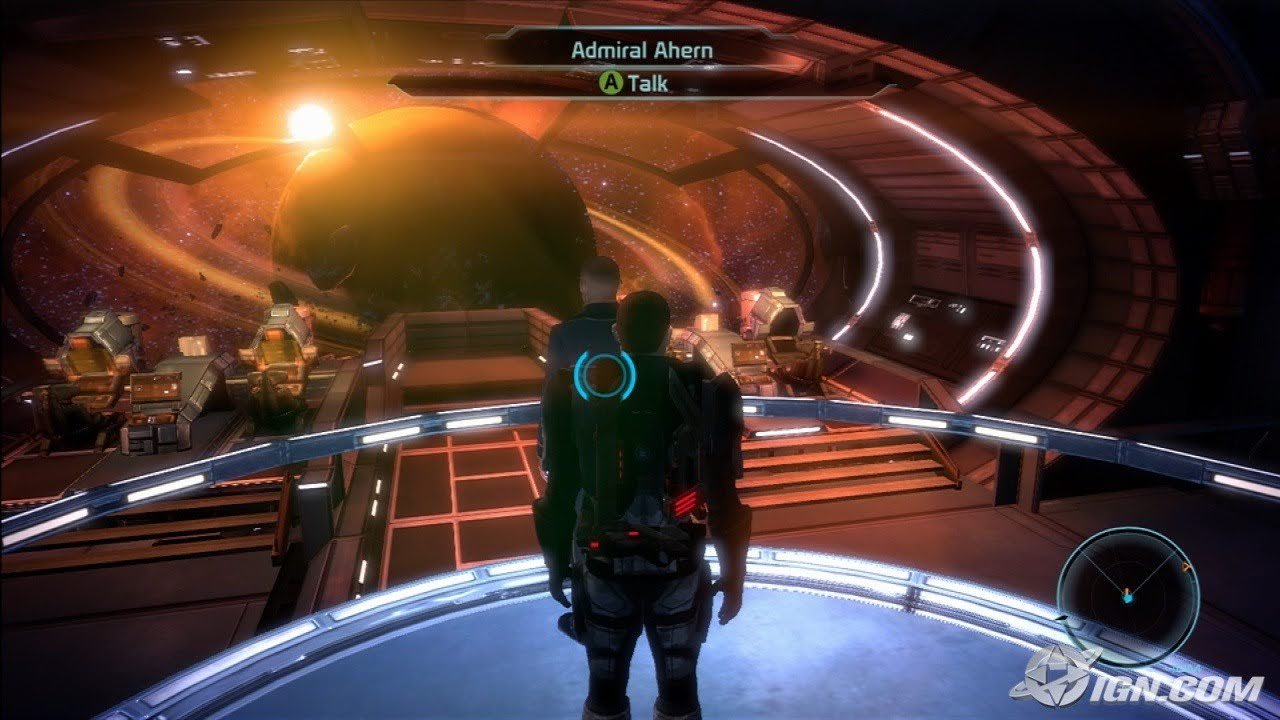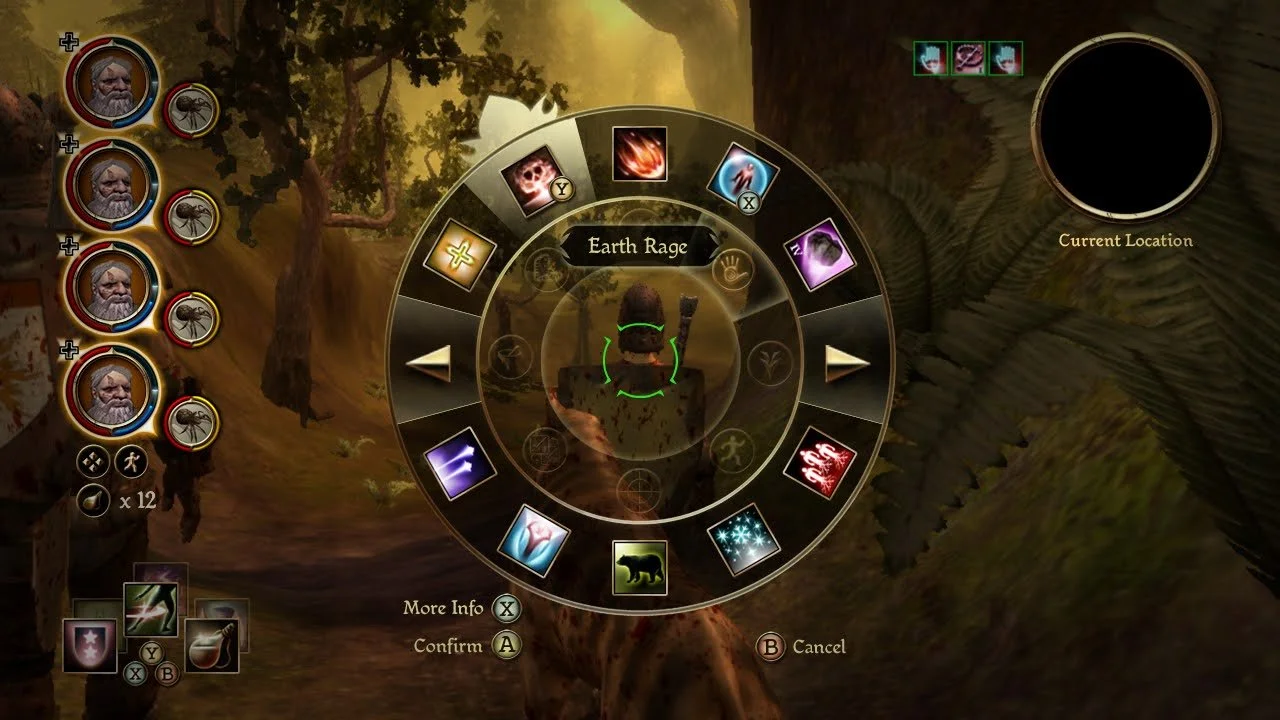Dragon Age: Origins - XBOX360 / PlayStation 3 - 2009
ROLE: Lead Designer / Product Design
TEAM: 2x Gameplay Designers, 1x UI Artist
PROJECT LENGTH: 18 months
In 2008, on the brink of going out of business, Austin, TX-based videogame developer Edge of Reality took on a “port” project for EA and Canadian developer BioWare to bring the fantasy epic Dragon Age: Origins to Xbox 360 and PlayStation 3. They had 9 months to bring the game to consoles, and the PC version was about to launch.
Dragon Age: Origins is the story of a recent recruit to a legendary order of warriors known as the Grey Wardens. Their mission is to save the kingdom of Ferelden from being overrun by the Darkspawn, a monstrous race of subterranean-dwelling beings who swarm the surface world every few hundred years in a movement known as the Blight.
Dragon Age: Origins was never planned to be a console game. It was a PC-exclusive game, and as such, it was intended for a “hardcore” PC role-playing game audience. Dragon Age was the "spiritual successor" to Baldur's Gate, a series of role-playing video games (RPGs) set in the Forgotten Realms Dungeons & Dragons campaign setting, consisting of two games - Baldur’s Gate and Baldur’s Gate 2: Shadows of Amn. Dragon Age: Origins, like Baldur’s Gate, was a hardcore high fantasy game for a niche audience.
Baldur’s Gate (1998)
Baldur’s Gate 2 : Shadows of Amn (2000)
A similar game launched a few months before Dragon Age was due to launch, and its success changed everything. Fallout 3 was a bold reinterpretation of a game with a similar look, feel, and history to Dragon Age, built from the start as a console game. Its streamlined system and interface had attracted a new audience to a franchise that was considered “niche.” Electronic Arts saw this success and believed it could replicate Fallout 3’s success with Dragon Age, given the strong pedigree of BioWare’s previous work. BioWare was focused on getting the PC version shipped and had no resources to focus on a console version.
Fallout 3 (2007)
I was the lead designer on the console versions of Dragon Age: Origins, tasked with redesigning all the major systems of the game, including the UI, player controls, and camera, to ensure they functioned well on consoles while maintaining gameplay that felt as enjoyable as its PC counterpart.
The first challenge I faced was that Dragon Age: Origins on PC took advantage of its high resolution to push UI elements to the edge of the screen, keeping the action "cinematic." On console, we were not afforded that luxury. Our maximum resolution required that our text and icons be a specific size to display properly on lower-resolution TV screens.
Additionally, since Dragon Age was an intensive tactical management game, it utilized numerous menus and sub-menus to enable you to manage your party of four brave adventurers. While the screen real estate on a PC might allow you to leave a window or two open during combat, on console, having anything open would block the action and meant we had to pause the combat. As this was a significantly different way of playing the game than the original, we proposed a distinctly different interface - the Infinite Wheel.
The Infinite Wheel




Based on the Apple Task Menu, radial menus, and our desire to maintain the original's simplicity, the infinite wheel addressed several issues for us. Namely, instead of having the screen full of menus every few minutes, we created a nested "half-radial" menu that allowed you to cycle through your options.
The first level covered the type of action you wanted to interact with (e.g., Access your inventory, View your Character Sheet, read your Map, etc.) The secondary interface was contextually populated with options based on your first choice (e.g., spells from your spellbook or the individual items from your backpack).
The amount of options you had at any one time was staggering, as this was our way of keeping the amount of "menu-diving" to a minimum.
Radial Menus
However, when we pitched it to BioWare, they baulked at the idea. The most recent game, Mass Effect, had used full-screen radial menus, and in their words, "one million Xbox players can't be wrong."
Mass Effect (2007)
Crestfallen, we went back to the drawing board and created a full-screen, paged Radial Menu that emulated the UI from Mass Effect.
Dragon Age Origins - Primary Radial Menu
Dragon Age Origins - Context-driven secondary Radial Menu
Sadly, the radial menu was the solution that shipped with the game. Instead, the infinite wheel would only live in the few concept screens I've shared with you today.
Dragon Age: Origins would earn strong critical and customer acclaim, going on to sell over 3.2 million units and win multiple Game of the Year and RPG of the Year awards. Dragon Age’s story would continue in three sequels - Dragon Age 2 (2011), Dragon Age: Inquisition (2014), and Dragon Age: The Veilguard (2024)







